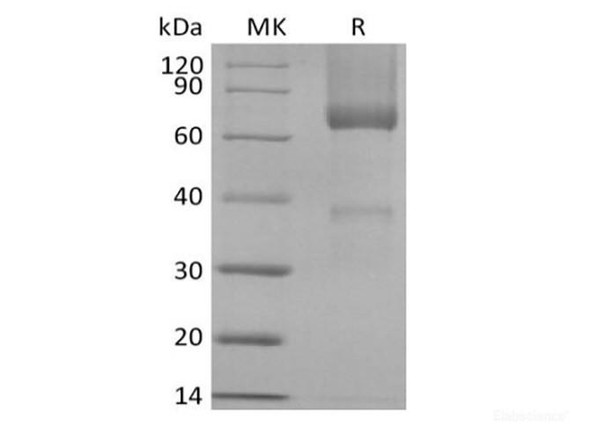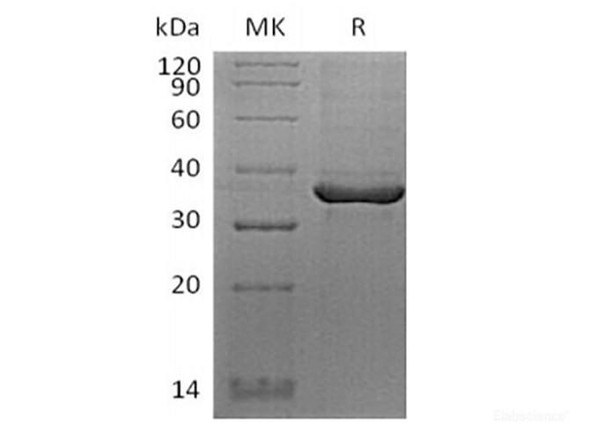Description
| Product Name: | Recombinant Human Glypican-3/GPC3/OCI5 (C-6His-Avi) Biotinylated |
| Product Code: | RPES6204 |
| Size: | 20µg |
| Species: | Human |
| Expression Host: | HEK293 Cells |
| Synonyms: | Sialic acid-binding Ig-like lectin 9, Siglec-9, CDw329, Protein FOAP-9, SIGLEC9 |
| Mol Mass: | 63.4 kDa |
| AP Mol Mass: | 70-130&40 kDa |
| Tag: | C-6His-Avi |
| Purity: | > 95 % as determined by reducing SDS-PAGE. |
| Endotoxin Level: | < 1.0 EU per μg of the protein as determined by the LAL method. |
| Bio Activity: | Immobilized Human FGFb (C779) at 10μg/ml (100 μl/well) can bind Human Glypican-3-His(CY15). The ED50 of Human NRG1Beta-His (CH84) is 4. 5 ug/ml. |
| Sequence: | Gln25-His559 |
| Accession: | P51654 |
| Storage: | Generally, lyophilized proteins are stable for up to 12 months when stored at -20 to -80°C. Reconstituted protein solution can be stored at 4-8°C for 2-7 days. Aliquots of reconstituted samples are stable at < -20°C for 3 months. |
| Shipping: | This product is provided as lyophilized powder which is shipped with ice packs. |
| Formulation: | Lyophilized from a 0.2 μm filtered solution of PBS, pH 7.4. Normally 5 % - 8 % trehalose, mannitol and 0.01% Tween80 are added as protectants before lyophilization. Please refer to the specific buffer information in the printed manual. |
| Reconstitution: | Please refer to the printed manual for detailed information. |
| Background: | Glypican-3/GPC3 is a member of the glypican family. It belongs to the glypican family and is highly expressed in lung, liver, and kidney. It is a heparan sulfate proteoglycan, which is overexpressed in various neoplasms such as hepatocellular carcinoma, malignant melanoma, and testicular yolk sac tumor, and plays an important role in cell growth and differentiation. GPC3 function is tissue dependent. In some tissues, GPC3 acts as a tumor suppressor gene, whereas in others, it acts as an oncofetal protein. GPC3 is a reliable marker for hepatocellular carcinoma. The sensitivity and specificity exceeds both alpha-fetoprotein and hepatocyte-paraffin1. GPC3 immunohistochemistry can aid in the differentiation of testicular germ cell tumors, being expressed in all yolk sac tumors but not in seminomas. GPC3 expression has also been identified in some squamous cell carcinomas of the lung and clear cell carcinomas of the ovary. Glypican-3 is currently regarded as a tumor marker and potential target for immunotherapy. |






